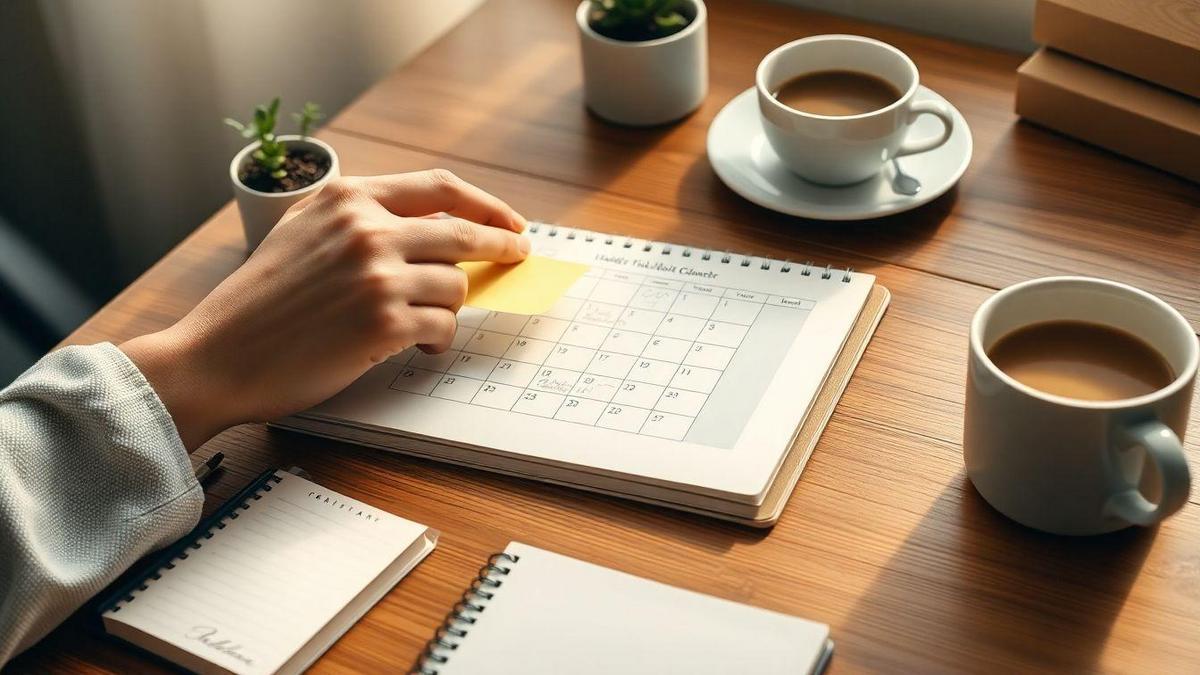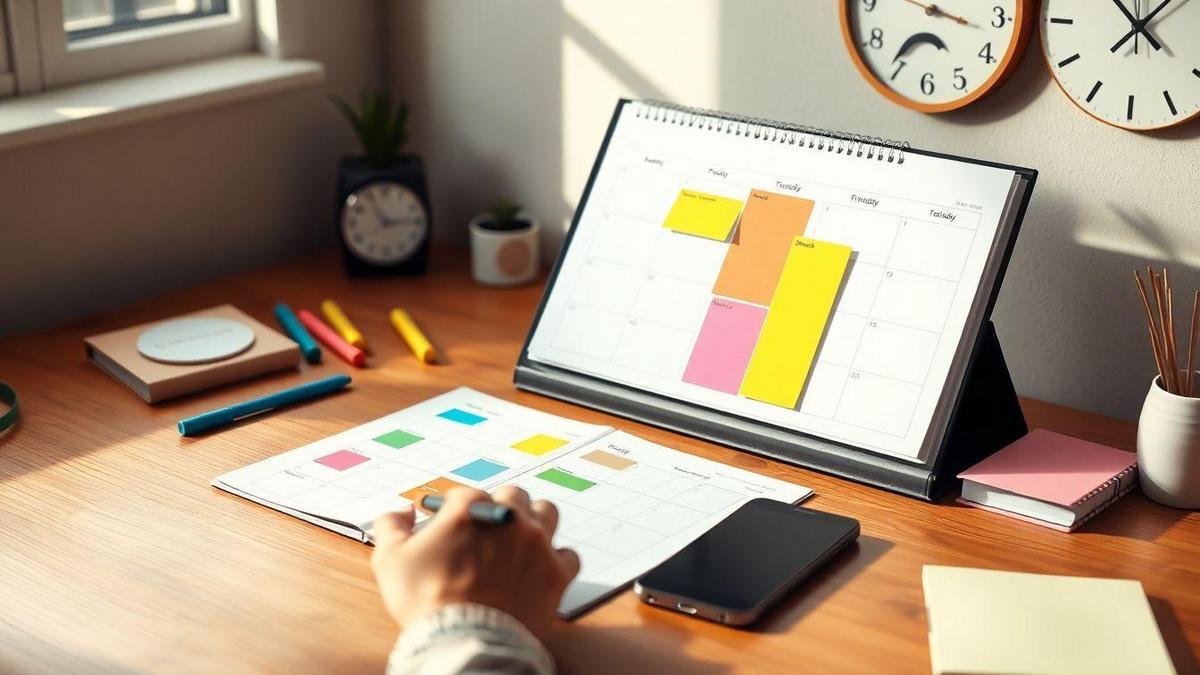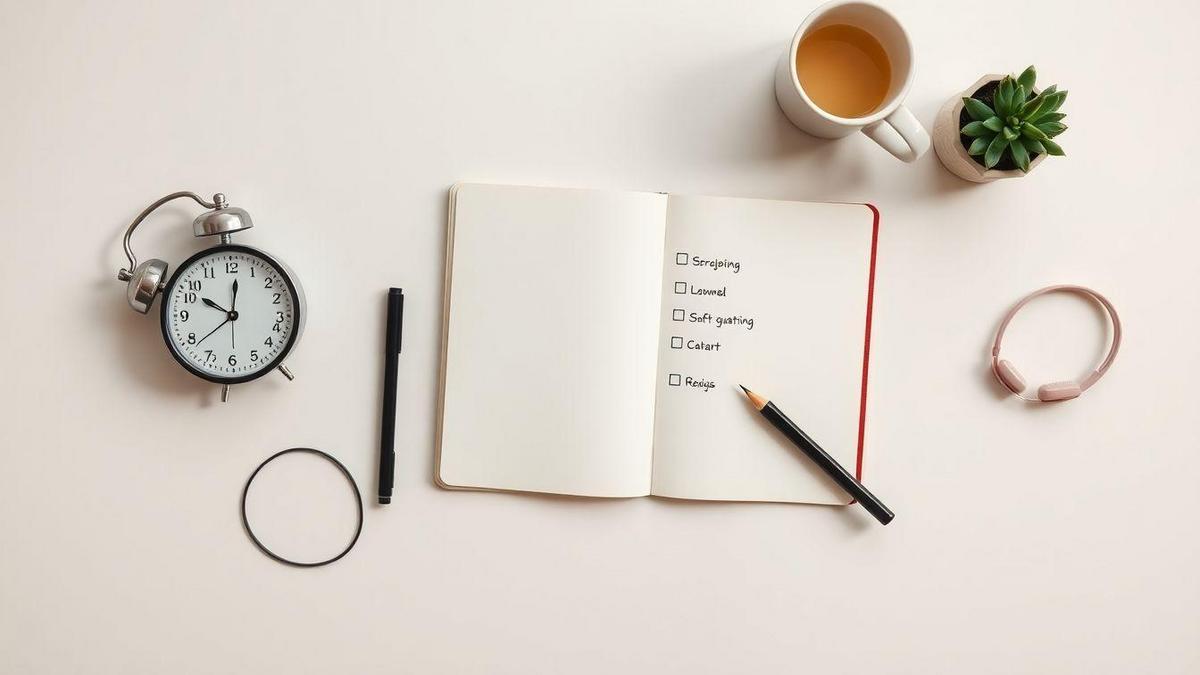How to create a simple practice routine that works
I started this path to build a daily habit that actually lasts. Below I share why I began, the benefits I see, and how tiny steps add up fast. You’ll learn how I pick one main skill, set clear goals, and use time blocking and micro practice sessions for focus. I show how cues, short repeats, and simple tracking keep my habit strong, how I stay motivated, use accountability, and tweak everything when life changes so the routine stays flexible and doable.
Key takeaway
- Set a small clear goal each day.
- Pick a regular time and make it a habit.
- Keep practice short and focused.
- Remove distractions before you start.
- Note progress and tweak the plan.

Why I start a daily practice routine
I want steady progress and less stress. A small win each day keeps my motivation alive. I make practice feel like play, not a chore—short, simple, and focused on one clear goal that gives focus and purpose.
Benefits I get from a daily routine
I gain control of my time, build skill steadily, and enjoy small improvements. Below is a quick view of benefits and typical daily time.
| Benefit | How I notice it | Typical daily time |
|---|---|---|
| Faster improvement | I hit new notes or nails more often | 10–20 minutes |
| Less anxiety | I feel calmer before sessions | 5–15 minutes |
| Habit formation | I miss fewer days each month | 5–10 minutes |
| Joy in learning | I look forward to practice | 10 minutes |
How small daily steps add up over time
I keep practice tiny. Five minutes beats zero. The idea behind “How to create a simple practice routine that works” is simple: pick one thing, repeat it daily, and watch minutes stack. A month of tiny steps shows clear progress; six months, real skill.
Example: I learned a short song by practicing 10 minutes a day—slowly it became clean and confident.
Quick facts:
- Start with 5 minutes. Small wins matter.
- Pick one clear target. Keep it simple.
- Use a timer. Track practice days with a calendar check.
- Reward a streak—small treats help.
| Tip | Why it works |
|---|---|
| Short sessions | Keeps energy high |
| Same time daily | Makes it a habit |
| One goal | Prevents overwhelm |

How I choose clear practice goals — practice goal setting
How I pick one main skill to focus on
Ask: What matters most right now? Choose the skill with the biggest payoff for the least pain. Treat it like a plant you water daily—small care, steady growth.
Steps I use:
- List things to improve.
- Mark the one that helps most this month.
- Set a simple focus: one skill, one plan.
If you’re deciding on an instrument or starting from scratch, consider a practical guide to choosing your first instrument without regrets to help match your goals and lifestyle.
If you learn one at a time, wins are clear and practice stays fun.
Setting short and long goals I can track
Break goals into short (weekly) and long (months) targets. Each short goal is a step toward the long one. Write them down.
How I track:
- Habit tracker or calendar checkmark.
- One number per goal (minutes, reps, pieces).
- Weekly review and tweak.
Good short goal = what and how long. Good long goal = what and by when.
Goal examples for a simple practice schedule:
| Skill | Short goal (1 week) | Long goal (3 months) | Daily time | Quick metric |
|---|---|---|---|---|
| Scales | Play 5 scales evenly | 12 major scales from memory | 15 min | Count clean scales |
| Sight-reading | Read one short piece daily | Read grade-level pieces fluently | 10 min | Pieces completed |
| Song | Learn first 8 bars clean | Play whole song start to end | 20 min | Clean runs in a row |
| Technique | 5 focused reps on problem bar | Remove hard spots in piece | 10 min | Fewer pauses per run |
Keep the plan visible; two minutes to check keeps practice on track.

How I build habit formation with tiny actions
If you ask “How to create a simple practice routine that works,” my answer is tiny actions stacked daily. A little every day beats a flood once a month. Small steps fit life and keep you consistent and happy practicing. This approach is supported by research on motivation, habit science, and well‑being.
Role of cues and routines
A cue triggers practice: morning coffee, sitting at your desk, a sticky note, or an open book. Routines follow cues—do the same first three moves every session. Tiny rewards (stretch, tea) link the habit to positive feelings.
Real example: placing a pick on strings became my cue—five plucks led to many longer sessions.
Why repeating short sessions makes habits stick
Practice often, not long. Short repeats beat long marathons. Showing up (even five minutes) builds trust between you and your goal. Track days, not minutes—streaks motivate more than huge time goals.
Simple habit chain I use (every session):
- Place the tool where I’ll see it — open the book/tune the instrument (30 sec).
- Sit and do the first fixed mini routine (3–5 min).
- Pick one focused drill and repeat slowly (5–10 min).
- Finish with a win—play something fun (1–3 min).
No flashy plans—just steady steps and a checkmark.

How I plan a simple practice schedule using time blocking
Time blocking on my calendar
Treat time blocking like an unskippable appointment. Put practice on the calendar and protect that slot. Pick a clear goal for each block (warm-up, drill, review). Color-code blocks, set a gentle alarm, and treat them as non-negotiable. For practical advice on time blocking and calendar management techniques, check productivity guides that explain how to protect focus blocks.
Tips:
- Keep goals small and specific.
- Track progress with a notebook line or calendar check.
Fitting short sessions into busy days (micro-practice)
Slice practice into 5–20 minute pockets. Use:
- Habit stack: attach practice to an existing routine (after brushing teeth).
- Carry tools: notebook, phone timer, portable instrument.
- Set a timer: 5 focused minutes beat unfocused 20.
- Make it fun: include something you enjoy each session.
I once did three five-minute sessions in a day and had more progress than one unfocused hour.
Sample time-blocked micro plan:
| Time of day | Duration | Activity | Goal |
|---|---|---|---|
| Morning (before work) | 10 min | Warm-up / review | Wake the brain; consistency |
| Lunch break | 15 min | Focused drill | Targeted improvement |
| Afternoon break | 5–10 min | Quick run-through | Reinforce memory |
| Evening | 20 min | Play-through / integrate | Connect parts into a whole |
If a block is missed, move on—log what you did and plan the next step.

Micro practice techniques and 10–15 minute sessions
What micro practice is and why it works
Micro practice = very short, focused bursts. One small skill at a time keeps attention sharp and progress visible. Tiny goals build habits—habits beat willpower. For academic grounding on focused drills and skill acquisition, see deliberate practice and focused skill training.
If you wonder “How to create a simple practice routine that works,” start with tiny, clear goals.
How I structure a 10–15 minute session
Simple plan: warm up, focus work, quick review.
| Segment | Time | Purpose |
|---|---|---|
| Warm-up | 2–3 min | Get hands and brain ready |
| Focus block | 6–9 min | One clear task or drill |
| Quick review | 1–3 min | Note one win and one tweak |
Treat each session like a sprint—full focus for a short burst.
Quick micro drills:
| Drill | Time | Goal |
|---|---|---|
| Slow scale/pattern | 10 min | Build accuracy |
| Rhythm loop with metronome | 10 min | Lock tempo |
| One measure isolation | 8 min | Fix a problem spot |
| Memory run | 12 min | Strengthen recall |
| Technique burn | 10 min | Improve control |
Keep a checklist at your practice spot and state one thing to fix before you start.

How I stay motivated and enjoy the process
I keep things simple and steady—remind myself of “How to create a simple practice routine that works” and break it into tiny daily steps. There is psychological evidence about research on habit formation and change that explains why small rewards and celebrations help sustain long-term practice.
Celebrate small wins
Mark tiny victories and reward yourself. That daily check feels like a pat on the back.
- Call out one thing you did well each session.
- Give a five-minute break or small treat after a win.
- Share wins with a friend or log them.
| Small win | Reward | Why it works |
|---|---|---|
| Finished a 10-min focused run | 5-min walk or song | Reinforces habit with a quick pleasure |
| Nailed a tricky line | A cup of tea | Connects effort to pleasure |
| Kept a 5-day streak | Extra play time | Builds momentum |
Mix fun into the schedule
Add a short fun task (7–10 min) as a carrot:
- Improvise to a favorite song.
- Turn a drill into a game and count correct attempts.
- Record one quick take and laugh at the odd bits.
Motivation tips:
- Keep sessions short—consistency over length.
- Set one clear focus per session.
- Use a visible calendar for streaks.
- Vary tasks weekly.
- Be kind to yourself—rest counts.
How I track progress
I log minutes, the focus, and one quick note about what worked. If you want to know “How to create a simple practice routine that works,” tracking is where to start. See practical tips for building new habits for simple ideas on logging and staying consistent.
Easy logging tools
- Small notebook on the stand—one line per session.
- Basic habit app for streaks and reminders.
- Simple spreadsheet for weekly totals.
Make logging take less than a minute.
Weekly review to tweak the plan
Each Sunday, spend 10–15 minutes asking:
- Did I meet my time goal this week?
- Which exercise gave the biggest skill jump?
- What felt boring or wasted time?
If you missed time, shave goals down. If something helped, give it more slots. Track tweaks in your notebook.
Visuals I use:
| Visual | Purpose | How I use it | Frequency |
|---|---|---|---|
| Line chart (minutes/day) | Shows time trends | Plot daily minutes in a spreadsheet | Weekly |
| Checklist of skills | Keeps focus | Tick warm-up, scale, song, problem spot | Every session |
| Heatmap calendar | Shows consistency | Color days practiced on a calendar | Monthly |
| Scorecard (1–5) | Rates session quality | Mark focus level and one fix | Weekly review |

How I use accountability to stay on track
When I work on “How to create a simple practice routine that works,” accountability is my anchor. I set small promises and share them—gentle pressure keeps me honest.
Partner systems and groups
| System | What I get | Best for |
|---|---|---|
| Practice buddy | Daily check-ins, short feedback | Need a push |
| Small group (3–6) | Weekly goals, shared progress | Building streaks |
| Online forum | Ideas, crowd support | Need variety |
| Coach/teacher | Targets, correction | Fast progress |
Real example: I missed two weeks once, told a buddy I’d do 20 minutes daily—his texts got me back in three days.
Public goals
Write goals where others can see them—clarity, a deadline, feedback, applause. I post a short goal each Monday in a group chat; practice minutes increase.
Weekly accountability routine:
| Day | Task | Metric |
|---|---|---|
| Monday | Plan the week | Minutes to hit |
| Wednesday | Mid-week check | Sessions completed |
| Friday | Quick review | Pieces learned |
| Sunday | Deep review | Total minutes next week goals |
If I miss more than two days, I shrink daily time and rebuild the habit.

How I adapt when life changes
If you ask “How to create a simple practice routine that works” during busy times, keep things small, clear, and flexible—shrink the plan, not the goal.
Simplify when time is tight
Pick the highest-impact move and do it with full attention for a short time. Fifteen focused minutes beat an hour of half-hearted work.
| Situation | What I do | Why it works |
|---|---|---|
| Morning rush | 10-minute focused session | Starts the day with a win |
| Lunch break | 15-minute drill | Breaks up the day |
| Late night | 5–10 minute review | Keeps the streak alive |
Tricks: set a timer, keep tools ready, pick tiny goals (one section, one skill), do one full-effort attempt if you have 5 minutes.
Updating goals and habits
When goals shift, change the routine the same week. Test one new habit for seven days and watch results.
My quick plan:
- Pick one clear goal.
- Choose one daily action tied to it.
- Make a cue (time, place, or trigger).
- Track for a week and tweak.
Example: switching from sight-reading to ear training—cut sight-reading, add a 12-minute ear drill after breakfast. One week of focus brought clear results.
Flexible rules I follow:
- Consistency over length.
- Fixed cue (same place/time).
- Vary practice types.
- Allow adjustment days.
- Keep top 3 items per session.
- Record one short note after each session.
- Reward small wins.
Conclusion
I wanted steady, stress-free progress—and found that small moves win. Focus on one main skill, show up daily with tiny steps, and protect short blocks of time with time blocking. Those tiny, repeated wins add up faster than you’d think.
Use clear cues, short routines, and a tiny reward to keep the habit alive. Track minutes, one clear focus, and a quick note—so progress isn’t a mystery. When life shifts, shrink the plan, not your goals. Flexibility keeps the routine doable.
One takeaway: choose one thing, make it tiny, make it regular, and guard it with a cue and a checkmark. Practice becomes habit, not a chore. This is how to create a simple practice routine that works—I’ve seen it work for me; it can work for you too.
If you liked this, read more practical guides at https://clickneutro.com. Learn more about our approach on our About Us page, or get in touch through the Contact page. Comments are moderated according to our comments policy.
Frequently asked questions
Q: How do I start a simple daily practice?
A: Pick one tiny goal, set a fixed time, practice five minutes, and keep it fun.
Q: What if I miss a day?
A: Shrug it off and start again tomorrow. Small steps beat guilt.
Q: How to create a simple practice routine that works?
A: Pick one habit, link it to a cue, track a small daily target (even 5 minutes), and celebrate small wins.

13 comentários em “How to create simple practice routine daily”